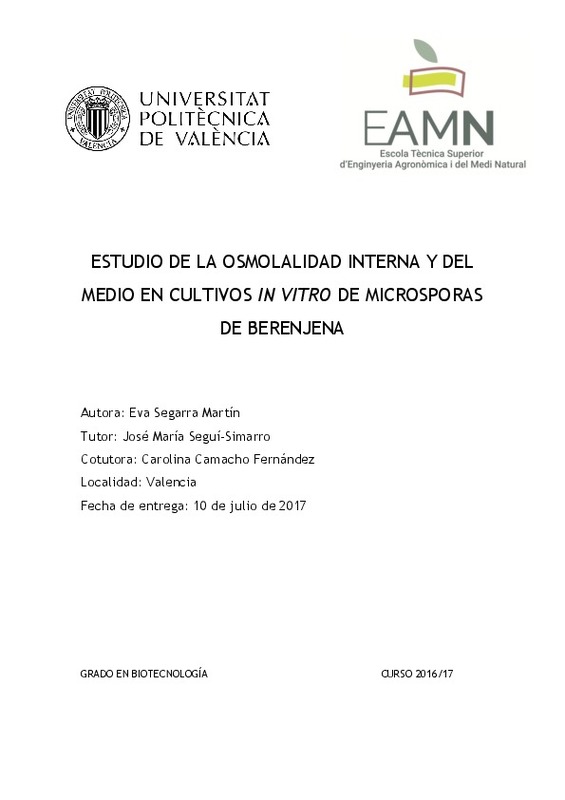|
Resumen:
|
[ES] La embriogénesis de microsporas es un proceso mediante el cual las
microsporas cambian su desarrollo gametofítico por un desarrollo esporofítico. De esta
forma la microspora se divide de forma simétrica produciendo ...[+]
[ES] La embriogénesis de microsporas es un proceso mediante el cual las
microsporas cambian su desarrollo gametofítico por un desarrollo esporofítico. De esta
forma la microspora se divide de forma simétrica produciendo embriones haploides (que
posteriormente se pueden convertir en dobles haploides), o embriones diploides
directamente. Este proceso tiene un gran interés agronómico, pues es una forma rápida y
barata de obtener líneas puras, esenciales para la producción de semillas híbridas. Por
ello, se pretende estudiar este fenómeno en berenjena, una solanácea de gran interés
agroalimentario en España. Actualmente en berenjena es posible obtener dobles haploides
mediante cultivo de anteras o mediante organogénesis, pero cuando se induce la
embriogénesis en microsporas cultivadas, los embriones derivados de las microsporas
terminan transformándose en callos, nunca en embriones. Estos callos pueden
transformase en plantas dobles haploides mediante organogénesis pero este proceso no es
tan eficiente como la embriogénesis de microsporas y requiere más tiempo. Por este
motivo resulta interesante investigar sobre qué condiciones de cultivo se podría llegar a
inducir la embriogénesis en especies como la berenjena y que lleguen a formar embriones.
En este trabajo se pretende estudiar los cambios osmóticos que sufre la microspora
cuando es inducida, para intentar vislumbrar por qué no es capaz de terminar su
desarrollo embriogénico e intentar descubrir qué condiciones exactas harían falta para
conseguirlo.
[-]
[EN] Microspore embryogenesis is a process by which microspores switch their
gametophytic development to a sporophytic pathway. When this occurs, the microspore
starts to divide itself symmetrically and produces haploid ...[+]
[EN] Microspore embryogenesis is a process by which microspores switch their
gametophytic development to a sporophytic pathway. When this occurs, the microspore
starts to divide itself symmetrically and produces haploid embryos (that can become
doubled haploids) or doubled haploid embryos directly. This process is very interesting
from an agronomic point of view because it is a quick way to produce pure lines, that are
essential to obtain hybrid seeds. For this reason, we are interested in studying this
phenomenon in eggplant, a solanaceous species with a big agronomic interest in Spain.
Nowadays, it is possible to obtain doubled haploids in eggplant though organogenesis or
anther culture. But when microspore embryogenesis is induced, the embryos obtained
end up becoming calli. These calli can regenerate into plants trough organogenesis, but
this process is less efficient than embryogenesis and consumes more time. For this reason,
it is interesting to study under which conditions it would be possible to induce a proper
embryogenic pathway for eggplant microspores. In this project we try to analyse which
osmotic changes suffer the microspore when it is induced, to understand better what is
going on inside it and try to discover which are the best conditions for its proper
development.
[-]
|







